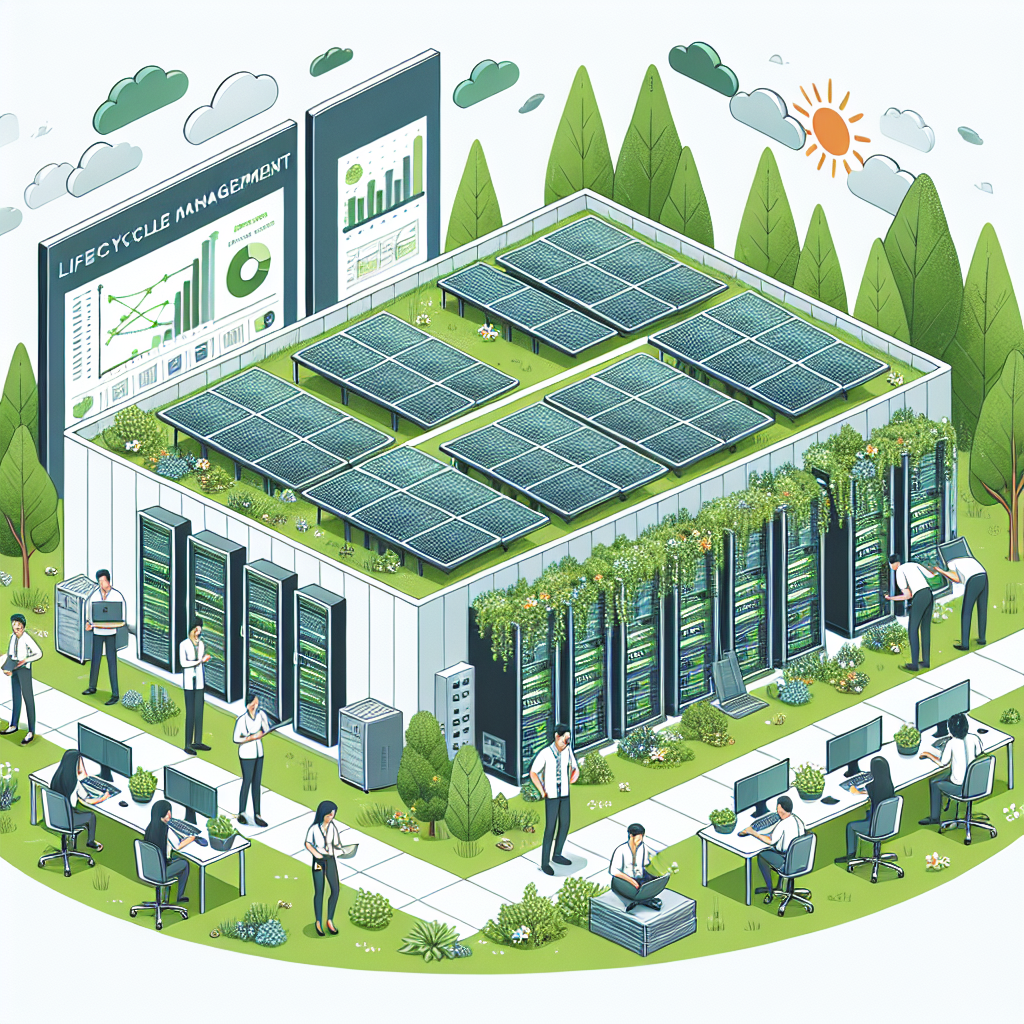As businesses increasingly rely on data centers to store and process their critical information, the need for sustainable practices in data center management has become more important than ever. Ensuring data center sustainability is not only beneficial for the environment, but it can also lead to cost savings and improved operational efficiency. One key aspect of data center sustainability is lifecycle management, which involves managing the entire lifecycle of data center equipment and infrastructure in an environmentally responsible manner. Here are some best practices for ensuring data center sustainability through effective lifecycle management:
1. Regular equipment maintenance and upgrades: Regular maintenance and upgrades of data center equipment can help improve energy efficiency and extend the lifespan of the equipment. By keeping equipment in good working condition, businesses can reduce energy consumption and minimize the need for frequent replacements, ultimately reducing the environmental impact of the data center.
2. Proper disposal of retired equipment: When data center equipment reaches the end of its useful life, it is important to ensure that it is disposed of properly. Recycling or repurposing old equipment can help prevent electronic waste from ending up in landfills, where it can pose environmental and health risks. Businesses should work with certified e-waste recyclers to responsibly dispose of retired equipment and ensure that any sensitive data is securely wiped before disposal.
3. Energy-efficient infrastructure design: When designing or upgrading a data center infrastructure, businesses should prioritize energy efficiency by incorporating technologies such as high-efficiency cooling systems, energy-efficient servers, and virtualization. By designing a data center infrastructure that is optimized for energy efficiency, businesses can reduce their carbon footprint and lower their energy costs in the long run.
4. Monitoring and optimizing energy usage: Monitoring and analyzing energy usage in the data center can help identify areas where energy efficiency can be improved. Businesses can use data center management software to track energy consumption, identify inefficiencies, and implement measures to optimize energy usage. By actively managing and reducing energy consumption, businesses can lower their environmental impact and operating costs.
5. Implementing renewable energy sources: To further reduce the environmental impact of data centers, businesses can consider incorporating renewable energy sources such as solar or wind power. By generating clean energy on-site or purchasing renewable energy credits, businesses can offset their carbon emissions and contribute to a more sustainable energy future.
In conclusion, ensuring data center sustainability through effective lifecycle management is essential for businesses looking to minimize their environmental impact and operate more efficiently. By implementing best practices such as regular equipment maintenance, proper disposal of retired equipment, energy-efficient infrastructure design, monitoring and optimizing energy usage, and incorporating renewable energy sources, businesses can reduce their carbon footprint and achieve long-term sustainability goals. By prioritizing sustainability in data center management, businesses can not only benefit the environment but also improve their bottom line through cost savings and operational efficiencies.


Leave a Reply